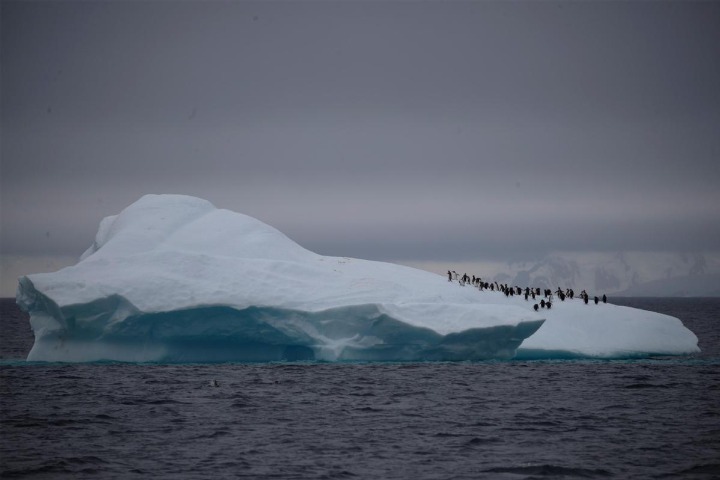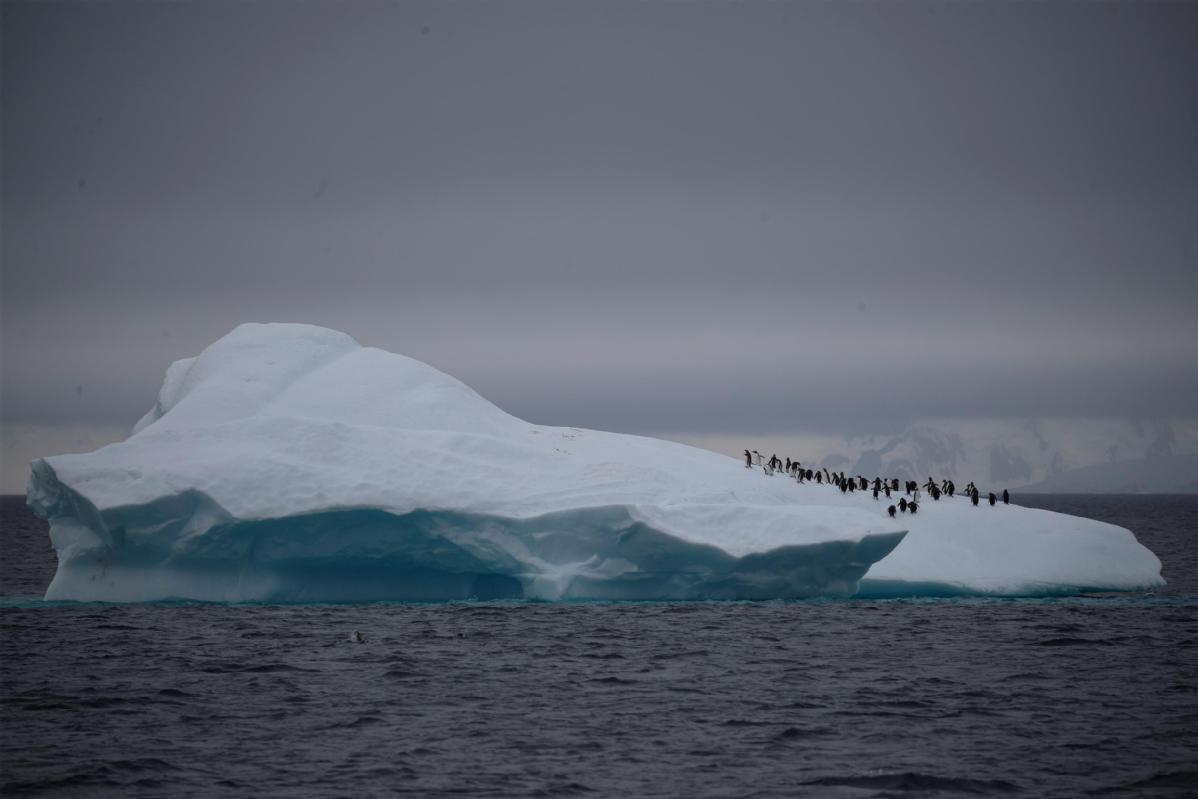
[ad_1]

According to an annual report released on Friday, Chinese scientists found that Antarctica’s ice shelves, particularly those on its northernmost peninsula, melted at an accelerating rate from 1999 to 2019.
Climate change and extreme weather conditions can contribute to environmental changes in the world’s southernmost continent and can have significant implications, from altering animal habitats to global sea level rise.
The annual report has been published by the National Remote Sensing Center of the Ministry of Science and Technology since 2012. It aims to provide key global data for climate research, food security, urban development, natural disaster mitigation and others crucial issues for sustainable growth.
Wang Qi’an, director of the center, said the report represents China’s commitment to addressing climate change and environmental issues with the international community.
“This year is the first time our report covers data from Antarctica, which is the largest source of cold in the global climate system and a key indicator of climate change,” he said.
Antarctica has an area of 13.9 million square kilometers, of which approximately 12.3 million square kilometers are covered in ice. The average thickness of the ice sheets is 2.1 kilometers, with the thickest part exceeding 4.9 kilometers, and the continent currently holds around 26.5 million cubic kilometers of ice.
Antarctica holds about 90% of all ice on earth, as well as 70% of all fresh water on Earth, the report said. If all that ice melted, it would raise global sea level by 58.3 meters.
Most ice sheets, especially those located in the interior of the continent, were generally stable from 1999 to 2019. But ice shelves, which are floating sheets of ice connected to the shores of a continental mass, have melted. at an accelerated pace, the report states.
During the period, approximately 19% of the Antarctic area experienced melting. This is usually not a cause for concern as it is natural for ice to melt and refreeze on the continent, said Wang Zemin, a professor of geodesy at Wuhan University and one of the leading experts behind the report.
However, the Antarctic Peninsula, the hottest and wettest part of the continent, where ice does not refreeze fast enough, accounts for 66% of all melting ice on the continent, making it one of the most fragile regions sensitive to climate change, He he said.
Another problem that deserves further investigation is the growing intensity of iceberg shedding, which occurs when large chunks of ice break off a glacier. From 2005 to 2019, scientists recorded 1,786 cases of childbirth of pieces larger than 1 sq km. On average, around 3,400 square km of ice shelf break away from Antarctica per year.
“These collapses can happen naturally even when there is no global warming, but now the frequency and intensity of these events are increasing,” Wang said. “If more ice shelves broke off and melted into the ocean … the sea level would rise.”
This would also have consequences for animals living on the frozen continent, particularly penguins.
“Emperor penguins are the iconic baby poster of Antarctica and are one of the key organisms that can reflect the health of the continent’s ecosystem,” he said.
Now, with the ice constantly breaking, they often have to move their colonies to new areas to find shelter and food, which can be difficult for squat, swaying creatures and ultimately results in a dwindling population, Wang said. .
But for Adélie penguins, another prevalent species in Antarctica, recent data has shown an increasing population. It was due to global warming melting the ice and exposing more land to live on.
Meanwhile, rising sea temperatures have increased the amount of algae in the waters around the region, thereby increasing the number of shrimp and other small organisms the penguins can eat.
“This discrepancy highlights the complex effects that climate change can have on the ecosystem and the world,” Wang said. “But our model shows that if temperatures continue to rise, it would eventually nullify the positive effect and lead to a decrease in the population for Adélie penguins.”
.
[ad_2]
Source link